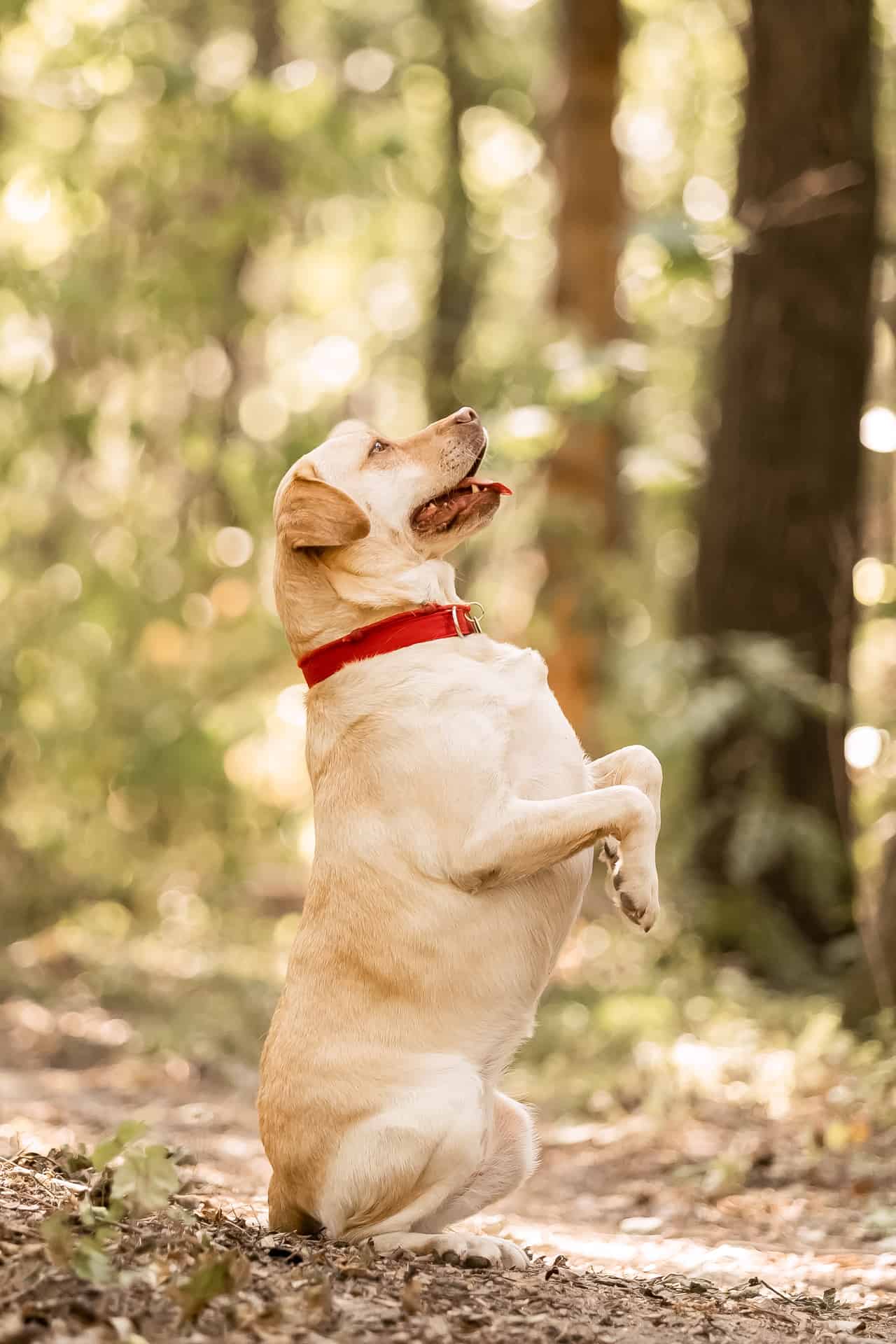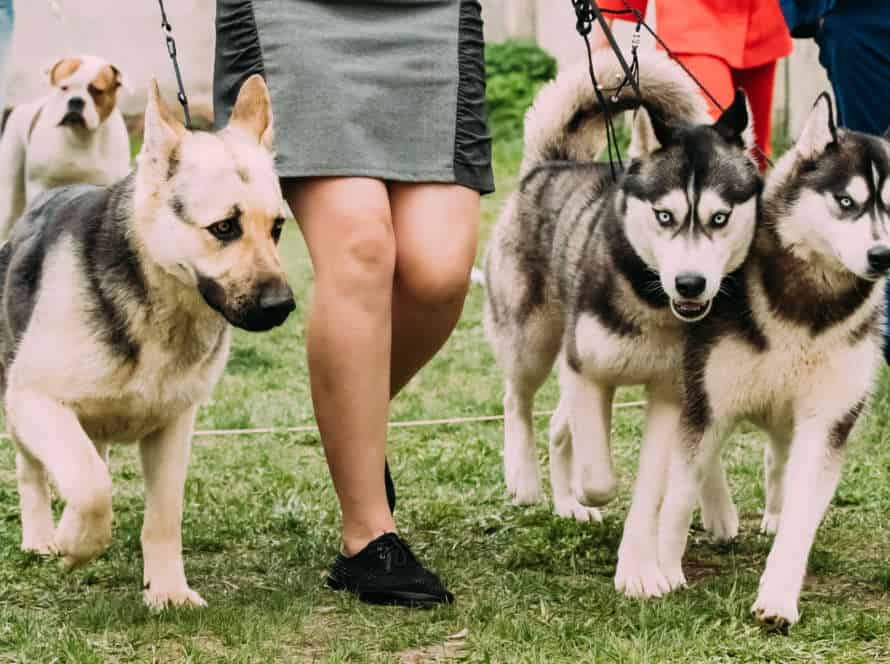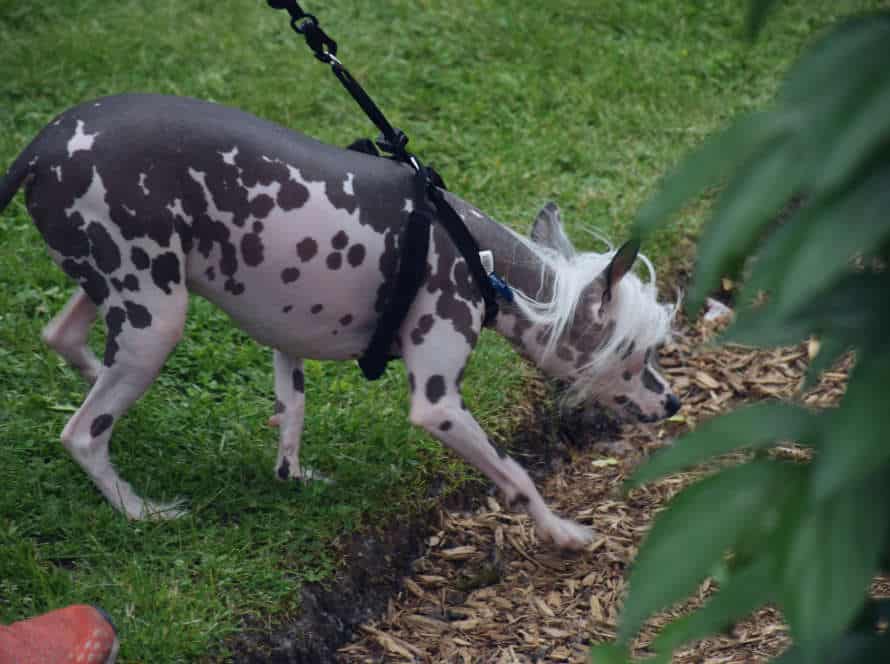Walking on Hind Legs: A Showstopping Trick
Walking on hind legs is an amazing trick for dogs! Here’s how to teach it:
- Start off by getting your pup to stand on two legs. Use treats or toys as a lure and give them a reward when they shift their weight to their hind legs.
- Take one step back and call out your pup’s name, encouraging them to come towards you. Reward them for any progress they make.
- Keep repeating this, gradually increasing the distance and time of the walk. With practice, your pup will be able to confidently walk on their hind legs, impressing everyone!
Pro tip: Reinforce this trick often to keep their muscles strong and flexible.
Preparing Your Dog for Walking on Hind Legs
Impress your family and friends with a show-stopping trick! Teach your pup to walk on their hind legs. It takes dedication, patience and consistency from you, the owner.
Let’s make this journey smoother by following these steps:
- Prepare for training.
- Be consistent.
- Be patient.
- Reward your pup.
Proper Training Techniques
Teaching your pup to walk on their hind legs can be quite a show! But, it’s important to use correct training for safety and health.
Start off with some simple exercises and stretches to warm up your dog.
- Hold a treat in front of their nose
- Lift it up gently
- Reward them with praise, treats, and/or toys for their efforts.
Keep an eye on their wellbeing during training. Don’t forget to take breaks.
Remember, this trick should not be overdone – it can put strain on their muscles and joints.
Pro tip: Get your vet’s advice before starting any new training routine with your pup.
Physical Preparation
Impress your pup with a trick that requires physical preparation! Here’s how to get started:
- Strengthen their core. Sit-to-stand and back leg lifts are great exercises.
- Stretch their leg and hip muscles for flexibility.
- Practice on stable surfaces such as grass, carpet, or yoga mats.
- Plan consistent training sessions for short periods of time. Also, offer rewards, treats, and praise.
Pro Tip: Always check with a vet before starting any training!
Behavioral Preparation
Training your pup to stand on its back legs can be a great trick to show off. But, you must prep it in the right way. To do this, here’s what to do:
- Start with basic obedience training. Teach your dog things like ‘sit‘, ‘stay‘ and ‘come‘.
- Establish trust and communication. This will help your pup feel safe.
- Train in a quiet and familiar area. Pick a spot where your pup feels comfy and away from distractions.
- Use positive reinforcement. Give treats and cuddles when your pup does well.
- Practice in small sessions. Start with short drills and increase the time gradually.
Above all, remember that health and comfort of your pup comes first. Don’t start unless you’re confident in the process.
Teaching Your Dog to Walk on Hind Legs
Teaching your dog to stand on two legs? Possible! With some patience and effort, you can make it happen. Basic obedience training, treats and lots of practice are the key. Here’s how to teach your pup this trick:
- Give obedience commands.
- Reward them with treats.
- Practice, practice, practice!
Starting with Basic Commands
Teaching your pup to walk on their hind legs can be a fun and amazing trick. Start by teaching basic commands such as ‘sit’, ‘stay’, and ‘come’.
Introduce ‘up’ with a treat, and use a hand gesture like raising an arm. Once pup is comfy, increase the duration of ‘up’.
To get them walking, add a verbal cue like ‘walk’ or ‘march’. Reward pup with treats, praise and love for progress and success.
Using Treats and Positive Reinforcement
Train your doggo to walk on their hind legs! It takes patience and positive reinforcement. Treats are a great motivator. Here’s how:
- Hold a treat just above their nose to encourage them to stand up.
- Use a clicker or say “up” to mark the behavior.
- Reward them with a treat and praise when they lift their front paws.
- Practice in small sessions, slowly increasing the time.
- If your pup struggles, break it down into smaller steps.
- Always use positive reinforcement – no punishment!
Pro Tip: Give it more wow factor with a hand signal or verbal cue!
Gradual Progression and Consistency
Teach your pup to stroll on their hind legs! It’s a cool trick, but requires gradual steps and consistency. Here’s how:
- Say the command word “up” and reward them with a treat when they stand.
- After they get comfortable, say “walk” and encourage them to take a few steps.
- Gradually increase the number of steps and distance, until long-distance walking on their hind legs is possible.
- Do this regularly, using the same commands and rewards each time, so they remember.
- Safety first – don’t push them to do something they can’t.
Pro Tip: Use treats they love to keep them motivated!
Common Mistakes to Avoid While Training Your Dog
Getting a pup to walk on its hind legs? Wow! It can be a show-stopper. But watch out for some mistakes. Don’t expect fast results. Training takes time. Never shout or punish. It’ll only discourage them.
Let’s take a look at mistakes to avoid when teaching this trick:
Rushing the Training Process
Avoid rushing the training process when teaching your pup to walk on their hind legs! It’s a showstopping trick. Here’s what to keep in mind:
- Start off slow. Gradually acclimate your dog, with treats and positive reinforcement, to standing on two legs.
- Be understanding. Dogs learn at their own pace. No forcing tricks they’re not ready for.
- Watch for fatigue. Walking on hind legs is physically challenging. Give them a break and water if needed.
- Don’t rush progress. Allow enough time to properly learn the trick. Or it can cause confusion and slow down progress.
Training your pup to walk on hind legs is a fun and rewarding experience, with patience and dedication.
Using Physical Force or Punishment
Never use physical force or punishment when it comes to training your pup. Teaching your doggo to walk on their hind legs is possible, but there are things to be aware of. Here’s some advice:
- Hold a treat above your pup’s head to encourage them to stand up.
- Give treats and praises to gradually increase the time your pup stands.
- Don’t force or punish them for not getting it right.
- Be patient and consistent, not all dogs can do this.
These tips will help you train and build a strong bond with your pup while they learn the walking on hind legs trick.
Neglecting Regular Exercise and Socialization
Neglecting exercise & socialization? That can get in the way of training your pup to do impressive tricks, such as walking on hind legs!
Exercise is key. It helps keep your pup fit and helps them release energy. Plus, it prevents bad behaviors. Socialization is important too. It helps your pup gain confidence & learn proper behavior around other dogs & humans.
Follow these tips to avoid common mistakes:
- Schedule a daily exercise routine for your pup.
- Let your pup interact with other dogs & humans in different settings.
- Use positive reinforcement & incentives to train your pup for tricks.
- Stay away from punishing your pup that may cause fear or anxiety.
A pup who exercises & socializes will be more willing to learn & master stunts. Pro tip: Regular exercise & socialization can help your pup stay motivated to learn more tricks.
Troubleshooting Walking on Hind Legs
Walking on hind legs? Wow! It’s a showstopper! Audiences will be amazed. But, teaching your pup can be tricky. How do you get them to stay upright? How to make them move? Here are some tips and tricks to help you and your pup master this incredible trick.
Blunders to be Expected During Training
Teach your pup to walk on hind legs? Wow! It takes patience, perseverance and a good sense of humour. But, there are some typical slip-ups during the training that you should know about. Such as:
- Relying too much on treats. Treats can be a great motivator, but too much can make your dog struggle to perform without them.
- Hurrying up. This is a difficult trick, so it needs lots of practice and repetition. Don’t rush it or you’ll just get frustrated and your dog will too.
- Over-correcting. Yes, it’s important to correct your pup’s mistakes. But don’t overcorrect; it’ll only cause confusion and stress.
Pro tip: Train in steps, reward with variety, and stay patient and persistent!
Recognizing Symptoms of Overexertion or Injury
If your pup is walking on its hind legs, it’s critical to spot signs of injury or strain. These are some common indicators:
- Limping or preferring one leg over the other
- Not putting weight on the leg
- Swelling or bruising
- Cuts or bleeding
- Whimpering/yelping when pressure is applied to area.
If you see any of these symptoms, you must stop training and take your pup for a vet check-up. Also, make sure your dog gets enough rest, stays hydrated, and doesn’t do the trick too often. Remember, it should be enjoyable for both you and your pup, not a source of tension or harm.
Seeking Professional Help If Necessary
Train your pet to walk on their hind legs. It’s a show-stopper! But, if your pet is having difficulty or in pain, you should get professional help. Signs that show you need help:
- Unpleasant feeling or hurt when walking on hind legs.
- Can’t balance or coordinate.
- No progress even after practice.
Get help from a trainer or vet to make sure your pet doesn’t get injured. Your pet’s safety is the top priority!
Pro Tip: Be patient and use positive reinforcement when teaching new tricks.
Tips and Tricks for Perfecting the Walk
Want your pup to impress? Get ’em walkin’ on hind legs! It might take a bit of practice and patience, but with the right instructions it’s totally possible. Here’s a few tips for the perfect walk. Wow the crowd!
Focusing on Balance and Posture
Balance and posture are key for teaching your pup to strut their stuff on hind legs. Here’s how to help your dog achieve this goal:
- Start with small steps: Begin with short walks, then gradually increase the length as your pup gets more comfortable.
- Offer torso support: Use one hand to gently support your pup’s torso while they walk.
- Use treats: Use treats as motivation and rewards for good posture and balance.
- Practice on a slip-proof surface: A yoga mat or carpet is ideal for preventing slips or injuries.
Patience, practice, and consistency are musts when teaching your pup to walk on hind legs. With time, your pup’s balance and posture will improve – making this trick even better!
Incorporating Distractions and Challenges
Perfecting the walk and teaching your pup to strut on their hind legs requires distractions and challenges. Here’s how to get them there:
- Start small – let your pup get comfortable walking upright for short distances first, sans any distractions.
- Positive reinforcement – reward them with treats and praise when they are successful.
- Introduce distractions gradually – start with basic toys or treats placed on the ground that they must navigate around. As they improve, add more complex and unpredictable distractions.
- Incorporate challenges – walk up or down stairs, over obstacles, or try walking for longer periods of time.
By adding distractions and challenges, your pup will be sure to wow the crowd with their hind leg walking skills!
Maintaining Ongoing Training and Skill Development
To perfect a dog’s walk on hind legs trick, ongoing training and skill development is super important. Here are some tips to get you started:
- Begin with basic obedience training. Make sure your dog knows commands like ‘sit’, ‘stay’, ‘come’ and ‘heel’ first.
- Use positive reinforcement. Give a treat and praise your pup when they do the walk on hind legs.
- Try a clicker. This can help you communicate and reward them when they do a good job.
- Practice consistently. Spend 10-15 mins daily, and gradually increase the duration and difficulty.
- Keep an eye out. If your pup looks uncomfortable, stressed or tired, take a break and try again later.
- Most importantly, have fun! Training should be a pleasant experience for both you and your pup.
Pro tip: Patience and consistency are key! It takes time and effort to perfect a new skill.
Frequently Asked Questions
1. What breeds of dogs can learn to walk on hind legs?
Any breed of dog can learn to walk on their hind legs with consistent training and positive reinforcement.
2. Is it safe for dogs to walk on their hind legs?
Walking on hind legs is safe for dogs as long as they are not doing it excessively and are not forced to do so. It is important to gradually increase their time spent on their hind legs to prevent injury.
3. How long does it take to train a dog to walk on their hind legs?
The amount of time it takes to train a dog to walk on their hind legs varies depending on the individual dog and their previous training experience. With consistency and dedication, it can take anywhere from a few weeks to several months.
4. Can walking on hind legs be harmful to a dog’s spine or joints?
Walking on hind legs can potentially be harmful to a dog’s spine and joints if they are forced to do it or do it excessively. It is important to monitor your dog for any signs of discomfort or pain while training them to walk on their hind legs.
5. What are some benefits of training a dog to walk on their hind legs?
Training a dog to walk on their hind legs can provide mental and physical stimulation, increase their overall agility, and provide entertainment for both the dog and their owner.
6. Can all dogs learn to walk on their hind legs?
Technically, all dogs have the ability to walk on their hind legs, but it may be more difficult for some breeds due to their size or physical limitations. It is important to consult with a professional dog trainer for guidance and assistance.







